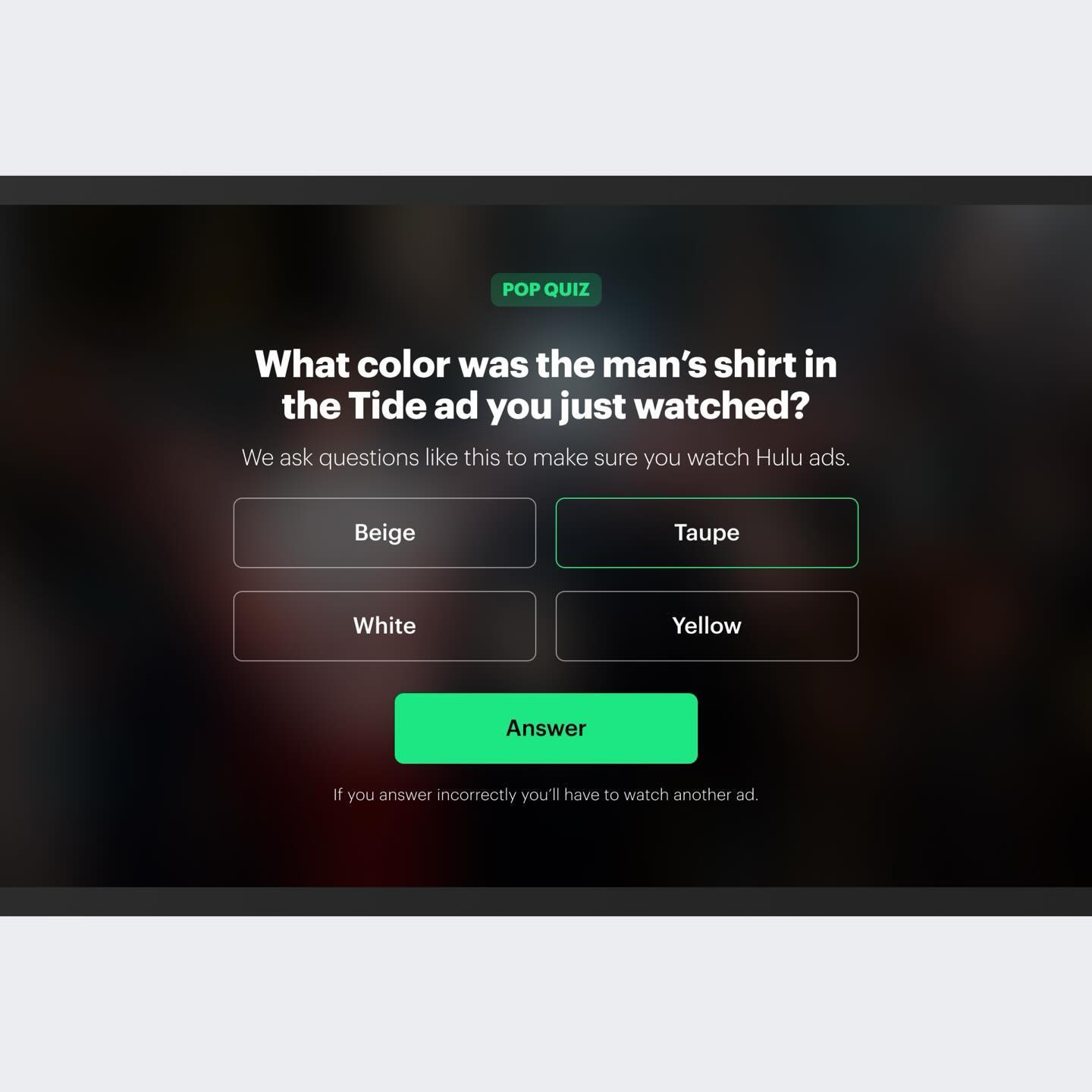Hey friends 👋
Apologies for the provocative subject line…
It’s not clickbait. I mean it literally. So let’s do this. 👇
Marker smarter decisions faster! On March 6th, I’m leading an in-person workshop where I peel back the curtain on how successful startups use design sprint methodology to launch sooner and scale faster. Join me! →
A few days ago, I was kicking on Threads when I came across this post by Soren Iverson, who posts jokes UI/UX “innovations”:
Hulu quiz on the ad you watched and if you’re wrong you watch another ad

My first reaction was probably the same as yours, judging by the many objections in the comments:
And it naturally didn’t escape anyone that this is how these things get started:
In fact, Soren himself described it as ”probably the most diabolical thing I’ve ever created”.
But is it though?
I have no idea.
Why?
These users were never asked what Hulu would have to trade for such a feature.
In the post, nothing was gained. Instead of the status quo, where they can choose to tune out during ads, they would have to pay attention. But they’re still getting the same number of ads, and spending the same amount of time on ads, and paying the same amount for Hulu.
That would likely not be very popular!
But guaranteeing recall on ads would create a much more valuable product for Hulu’s advertisers, who may, in turn, be willing to pay much more per impression.
Can that be passed on, at least in part? Would users be willing to watch only a single ad per episode in exchange for answering a one-question quiz? Or would users accept quizzes in exchange for a Hulu free tier?
Would it capture the same audience, or would it segment the market in a new way, delivering customers who otherwise would not have used the service?
I have no idea. Probably not.
But this is the nature of business model innovation: we have an hypothesis about how to capture more value, but no hypothesis about how to create more value.
It’s not that we don’t know the answer — it’s that we don’t even know the question!
In fact, it’s just a feature, and a half-baked one at that.
What we do know is that we have a two-sided market with a number of levers we can pull, and the only way to find out if this could be a market-dominating feature or just pure evil would be to talk to customers and play with the value creation equation.
Anything else is just advertising ignorance.
See you next week!
— jdm








